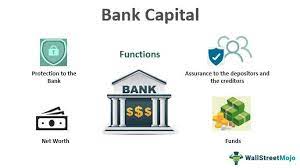The capital market is a segment of the financial market where long-term debt and equity instruments are bought and sold. It facilitates the flow of funds between investors and entities seeking long-term financing, such as corporations and governments. The capital market plays a vital role in channeling savings and investments for productive purposes. Here are some key aspects of the capital market:
- Participants: The participants in the capital market include individuals, institutional investors, corporations, governments, and financial intermediaries such as investment banks and stockbrokers. They engage in activities such as issuing, buying, and selling long-term financial instruments.
- Instruments: The capital market comprises various types of financial instruments that represent long-term claims on the issuer. Some common capital market instruments are:a. Stocks (Equities): Stocks represent ownership shares in a company. Investors who purchase stocks become shareholders and have rights to a portion of the company’s profits (dividends) and voting rights.b. Bonds: Bonds are debt securities issued by governments, municipalities, and corporations to raise capital. They represent a loan made by an investor to the issuer, who agrees to repay the principal amount with interest over a specified period.c. Preferred Stock: Preferred stock represents ownership in a company but with preferential rights over common stockholders. Preferred stockholders receive dividends before common stockholders, and in the event of liquidation, they have a higher claim on assets.d. Debentures: Debentures are unsecured bonds issued by corporations, backed only by the issuer’s general creditworthiness. They do not have specific collateral backing and rely on the issuer’s ability to repay.e. Convertible Securities: Convertible securities, such as convertible bonds or convertible preferred stock, can be converted into a predetermined number of common shares of the issuing company. They provide investors with the option to convert their debt or preferred equity holdings into common equity.f. Derivatives: Certain derivative instruments, such as options and futures, are traded in the capital market. These instruments derive their value from an underlying asset, such as stocks or bonds, and their purpose is to manage risk or speculate on price movements.
- Primary Market: The primary market is where new securities are issued and sold for the first time. Companies and governments raise capital by issuing new stocks or bonds to investors. The primary market provides an avenue for entities to access long-term funding and expand their operations.
- Secondary Market: The secondary market is where existing securities are bought and sold among investors. It provides liquidity to investors who wish to sell their securities and allows new investors to enter the market. Stock exchanges and over-the-counter (OTC) markets are examples of secondary markets.
- Investment Banking: Investment banks play a crucial role in the capital market by assisting companies in issuing securities and raising capital. They underwrite new securities, provide advisory services, facilitate initial public offerings (IPOs), and help companies navigate regulatory requirements.
- Regulatory Oversight: The capital market is subject to regulatory oversight to ensure fair and transparent transactions, protect investors, and maintain market integrity. Regulatory bodies set rules and regulations governing the issuance, trading, and disclosure of securities.
The capital market serves as a platform for long-term financing, allowing entities to raise funds for investment in projects, expansion, and other capital-intensive activities. It offers individuals and institutional investors opportunities to invest in a range of financial instruments for long-term wealth accumulation. The capital market’s efficient functioning is essential for economic growth and development.
